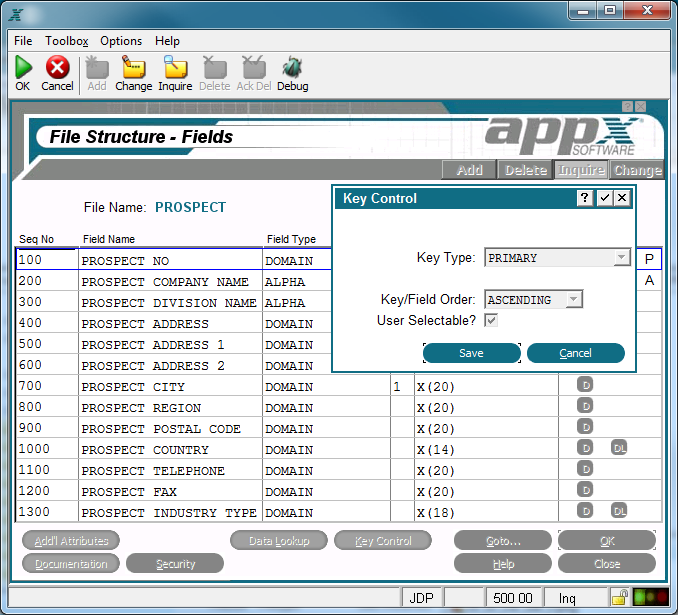Chapter 1-1: Overview of Application Design |
Fields Key Control Option Key control accesses the fields Key Control overlay, shown below, from which you can define attributes about key fields. This option applies only to key fields (both primary and alternate) for indexed files. For non-key fields, this option is ignored unless a field is part of a group field that is itself a key to an indexed file. Upon completion, you are returned to the Fields screen.
Fields Key Control Overlay The fields Key Control overlay contains the following fields: Key Type indicates whether or not a field is a key field and, if yes, the type of key. A group trailer field cannot be a key field. The Key Type options can be scanned and consist of: PRIMARY key fields are the default key paths for a file. APPX requires one (and only one) primary key for each indexed file. All records can be accessed by a primary key path (must be unique). ALTERNATE key fields optionally provide alternative key paths to a file. Duplicate values and up to 16 alternate keys are permitted in APPX. ALTERNATE/UNIQUE key fields optionally provide alternative key paths to a file. Duplicate values are not allowed. ALTERNATE/FORCED key fields are the same as ALTERNATE key fields except that duplicate keys are retreived in primary key order. The default is blank. Key/Field Order specifies the order of the key or key segment. Maximum Key Size: The Primary Key can be up to 255 bytes in length. An Alternate Key can also be 255 bytes in length less the length of the Primary Key. Appx will throw an error while processing the data dictionary if any key in the file is greater than 255 bytes.
User Selectable? determines whether or not a user can switch to a key path with the Select Access Path option from within an input process. The User Selectable' options are 'yes' |
Application Design Manual "Powered by Appx Software"189 ©2006 By APPX Software, Inc. All Rights Reserved |
